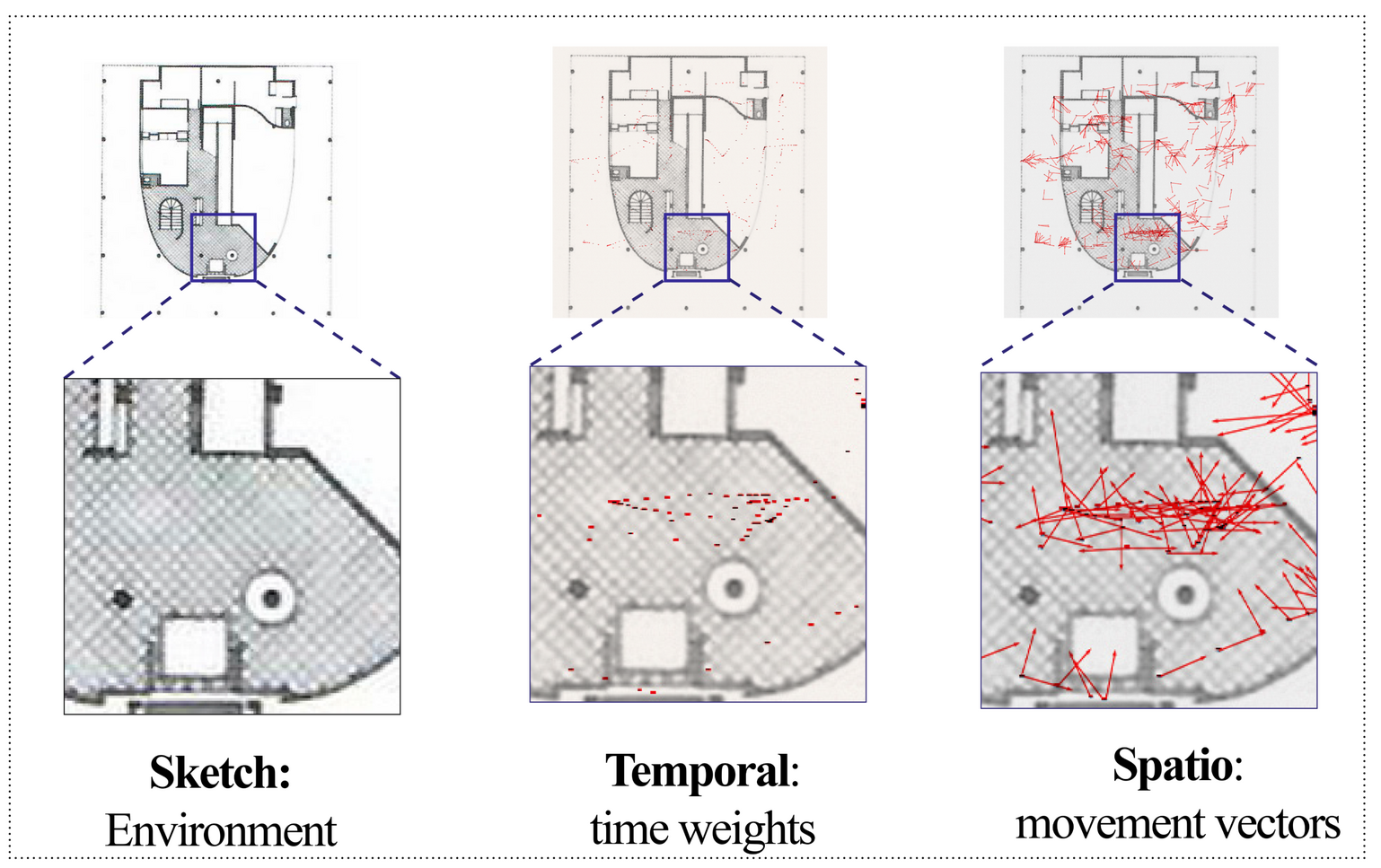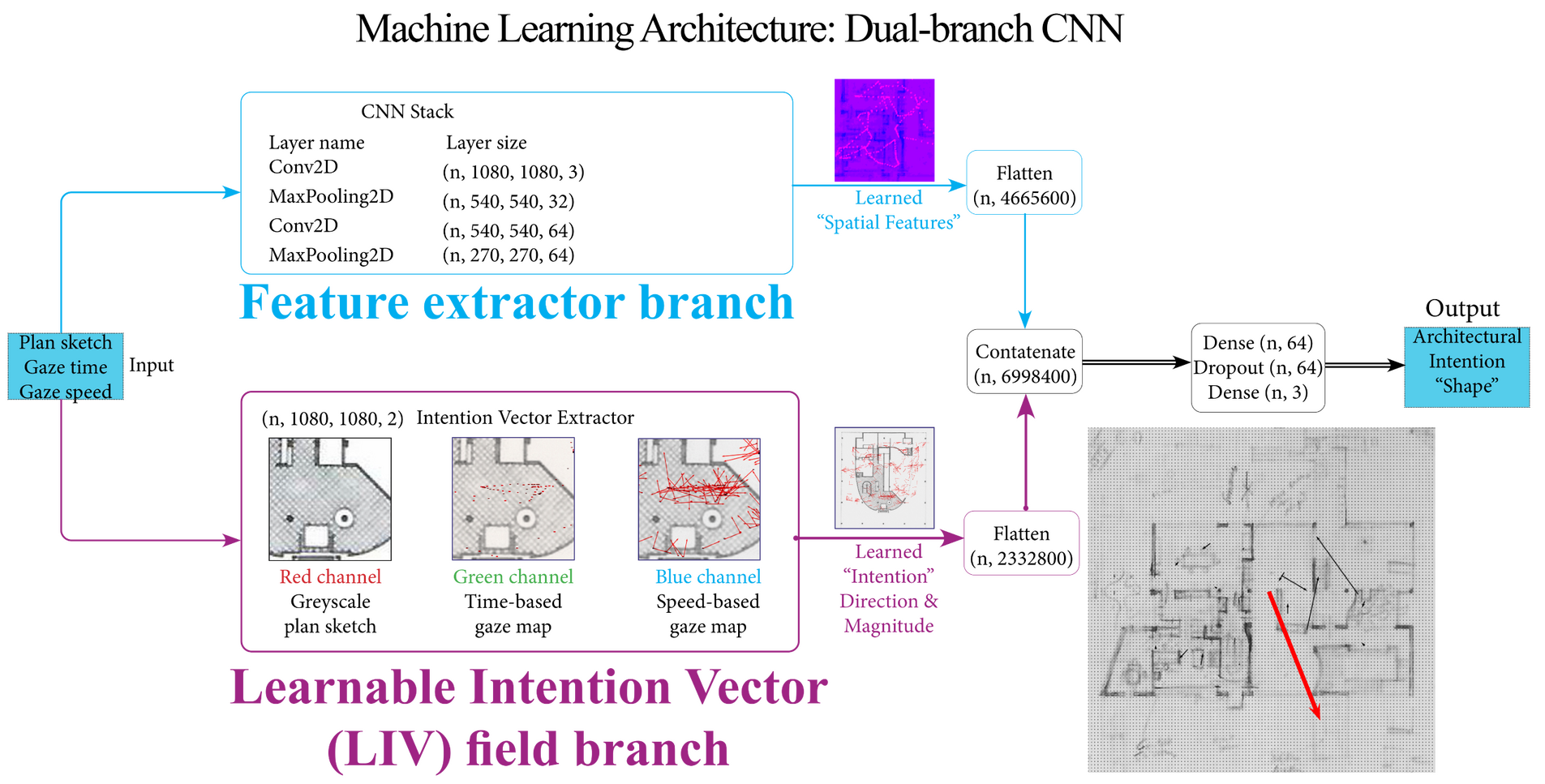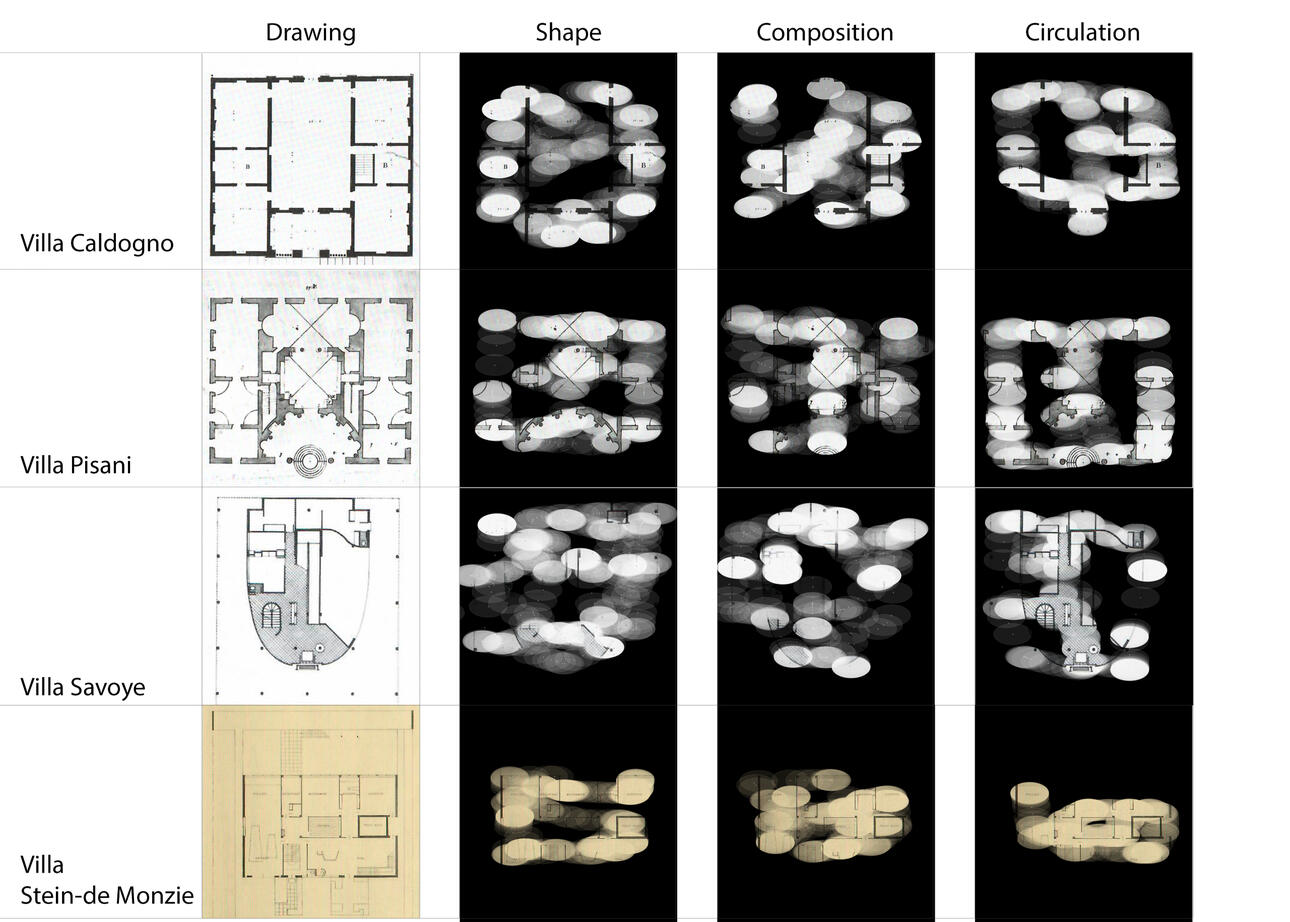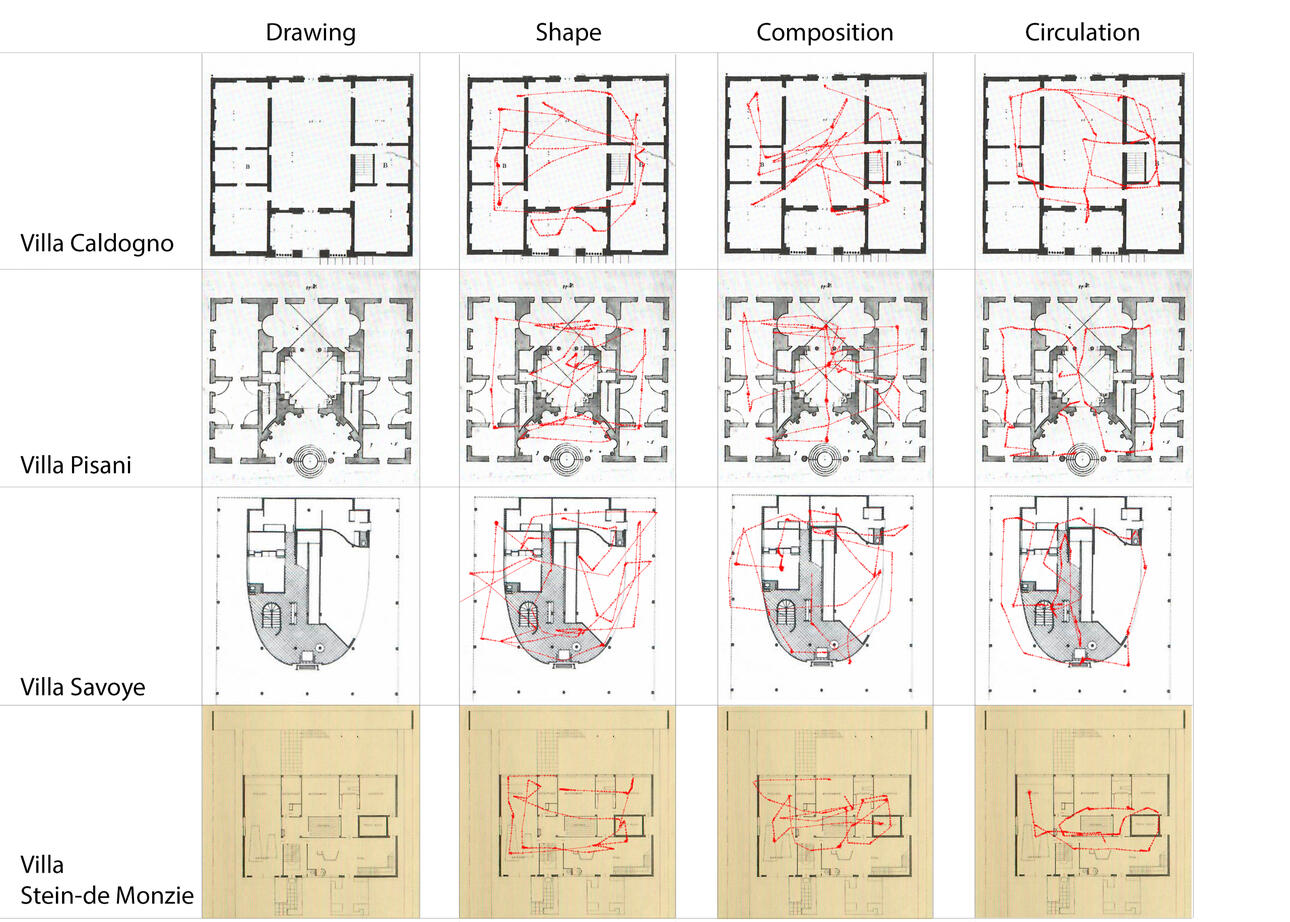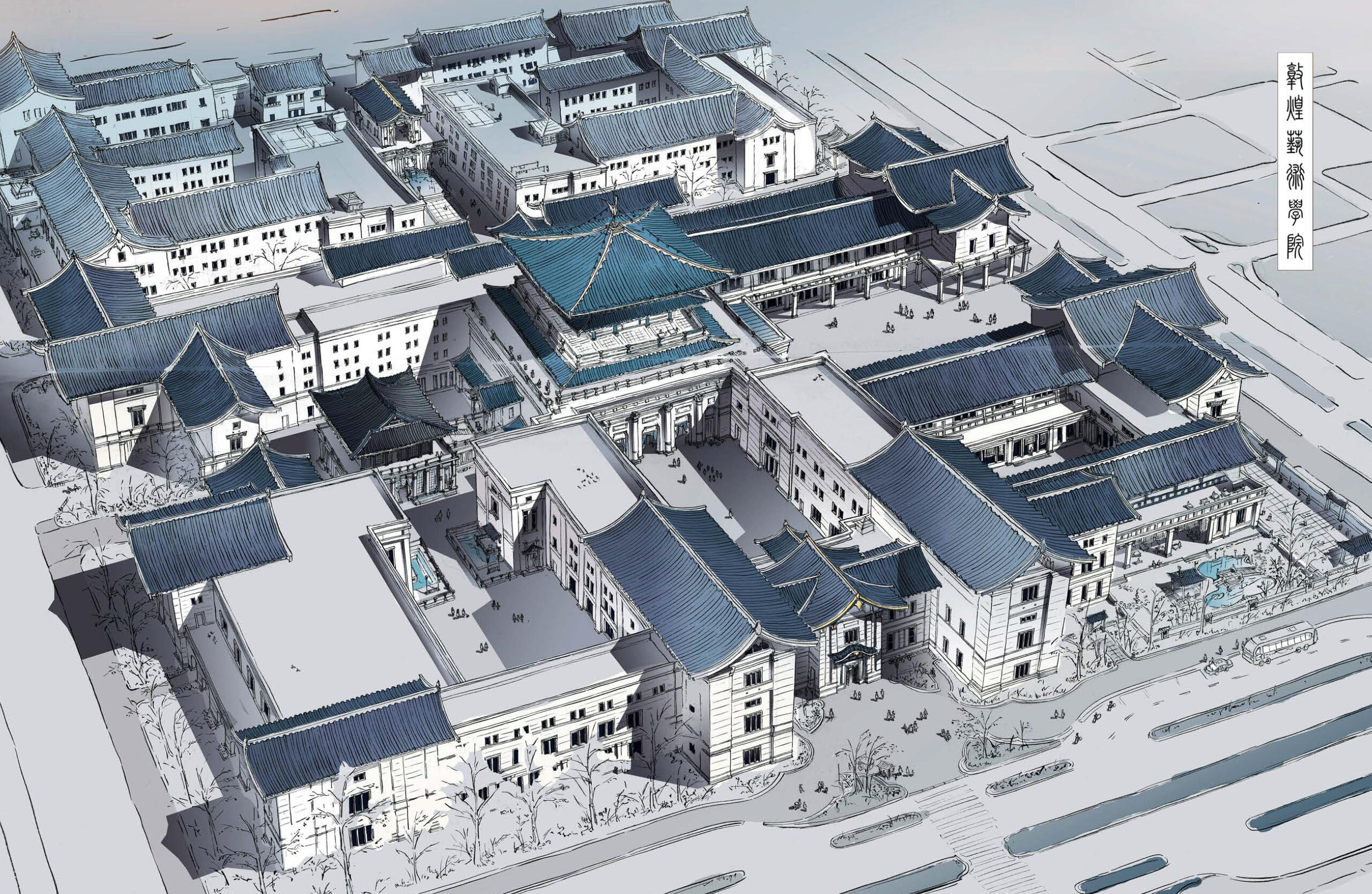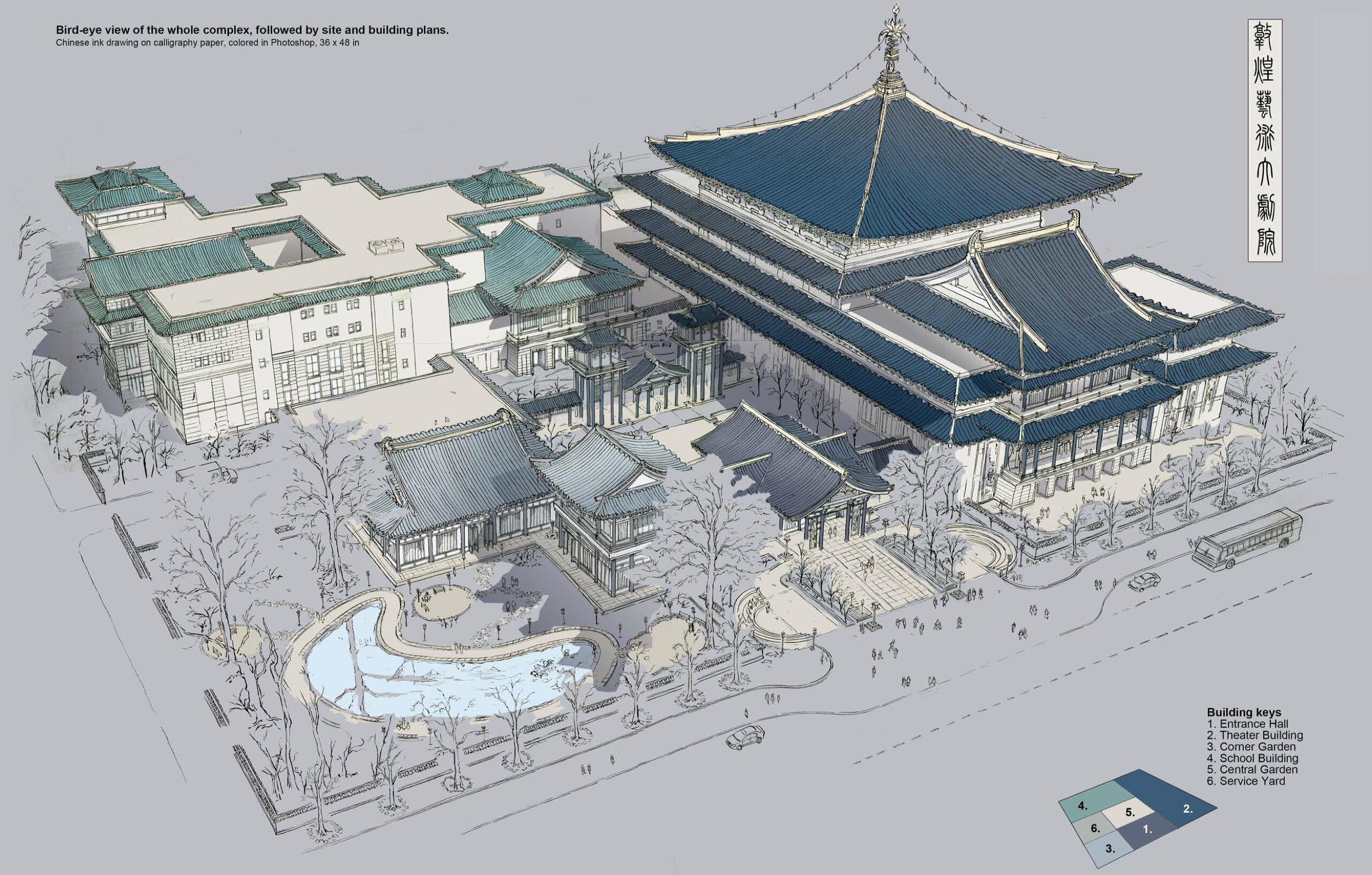Xiaoyun Margaret Zhang
"书画之妙,当以神会,难可以形器求也."
"神领意造,怳然见其有人禽草木飞动往来之象,了然在目。则随意命笔,默以神会,自然境皆天就,不类人为,是谓活笔." -- 《梦溪笔谈》
"Understand with your mind and create with your spirit you will see the figure, grass, trees and animals become alive just as they are in front of your eyes. Thus you paint with the understanding in your mind, and naturally it will be as if it was made by nature, not artificial. This is how to paint in a lively manner."

PhD Candidate in Architectural Design and Computation, Massachusetts Institute of Technology
ND BArch'17, MADU'19 ; MIT SMArchS'21
Research: Probabilistic Machine Learning of Creative Visual Thinking
Envisage I & II examine measurable physiological attributes of eye-movement such as vector speed and foveal vision areas and their emergent relationships to embedded architectural intentions.PhD Thesis: ROSAS, or Reciprocal Observational Stochastic Action-Space model, translates temporal-spatio eye-movement patterns into architects' perception of design intentions. This model-based approach leads to a Neural Network where machines learn to see like architects in understanding design representations.
About me
I am a PhD candidate in Computation at the Department of Architecture, MIT. I am from Beijing, China, and I hold a BArch and a MADU from the University of Notre Dame, and a SMArchS Computation from MIT. I received MIT Presidential Fellow of year 2022 - 2023. I dedicate in studying compositional system and procedure of architects' vision in Design Intelligence and incorporating visual thinking into deep learning and computational design processes. Carrying on the hand-drawn tradition in architectural design of the Renaissance and École des Beaux-Arts, I am now exploring architects eye movement in the context of perception and creativity, for both theoretical and applicational approaches in probablisitic machine learning.I enjoy drawing fantasy scenes and characters, making costumes, planting roses, drinking tea, designing kimonos, listening to folk music from around the world, and developing happy and sympathetic collaborations between human and machines.
Publications & Designs
Observe Like an Architect: A neural network model that recognizes embedded design intentions in plan sketches through eye-tracking. @eCAADe 2025 Confluence.
Eye-tracking Architect: Investigating design intentions in plan drawings @SiGraDi 2024 Biodigital Intelligent Systems.
Institute of Dunhuang Arts: A comprehensive architectural and urban development of traditional Chinese Architecture and Art. @ND Thesis 2017&2019.
Experience
Research Assistant: Architecture, Representation and Computation Group (ARC) @ MIT
Visiting Scholar: First-year graduate design studio, School of Architecture, @ University of Notre Dame.
Teaching Assistant: MIT 4.570 Computational Design Lab and Design Heritage; MIT 4.562/4.502 Advanced Visualization in Motion Graphics; MIT 4.507 Introduction to Building Information Modeling in Architecture; MIT 4.117 Embodied Computation; MIT 4.021 How to Design; ND ARCH-40511 Structural Design for Architects; ND ARCH-11011: Drawing.
Observe Like an Architect:
A neural network model that recognizes embedded design intentions in plan sketches through eye-tracking
Abstract Architects’ visual behavior during the interpretation of architectural representations reflects the “eye-mind link” central to design thinking. This paper proposes a novel dual-branch neural network framework that captures and utilizes dynamic eye-tracking data to embed and recognize design intentions from architectural plan sketches. We introduce a learnable “intention vector field” layer within a convolutional neural network (CNN), trained on eye-tracking data that records goal-directed gaze patterns corresponding to three architectural intentions: shape, composition, and circulation. The data collection pipeline enables eye movements mapping of multiple design intentions to one plan sketch. We evaluate the model’s performance with and without the vector field layer to assess its contribution. Results demonstrate that the learnable layer significantly improves classification accuracy and enables the network to internalize intention-specific gaze dynamics—mirroring the “eye-mind link” through interpretable learned features.Key Words Architectural Design Intention, Neural Networks, Eye-tracking, Visual Data Representation, Eye-mind Link.
Gallery

Temporal-spatio representation of "design intentions'

Machine learning architecture diagram
Eye-tracking architects: investigating design intentions in plan drawings
Abstract Architects have a long tradition of communicating design ideas visually by embedding them in representations such as sketches and drawings. With the advances in physiological recording devices such as eye trackers, architects have obtained another means of exploring how their vision works when performing design tasks, and discovering how their eye movements reflect creative design thinking. In this paper we investigated architects’ eye movements during design intention retrieval by examining existing studies of eye-tracking in architecture and proposing two new types which were observed in early scientific explorations and architectural writings. Finally, we devised a tool to visualize eye movements when architects observe design sketches by Palladio and Le Corbusier, and analyzed gaze directions and foveal vision clusters from our custom calibrated eye-tracking tool. Our evidence of two types of eye movements suggested that distinctive eye movement patterns were temporally and spatially meaningful to their corresponding design intentions.Key Words Design cognition, Eye-tracking, Architectural drawings and sketches, Design intentions, Visual search
Gallery

Foveal vision areas of different design intentions

Scanpaths of different design intentions
Institute of Dunhuang Arts, Beijing, China:
Architectural heritage and its roles in a modern metropolis
Anchoring our celebrative daily lives
In a global world, as shared building traditions becoming more accessible, architects should engage multiple architectural heritages in a design process that produces a sense of place through the use of modern materials, contemporary construction procedures, clarity of structure, local and reginal vernaculars and monumental forms. Architects should consider both traditional and future-oriented adaptations to successfully aim for a healthier and more engaging urban condition that sustains and evolves.Architecture has been given the tasks of creating and sustaining great spaces for people to visit, study, experience, reflect, live, and rest. People, spaces, lights, colors, feelings and times alike, we perceive the world around us by attending to details of life that relates to our very daily activities. Buildings are manifested for the very common lives of all: streets that connect apartments to work places, family-owned shops that sell food for late-night students, and local supermarket that fills with treats and sales...The hearts of out everyday like reside in the coziest spaces that architecture can provide and cherish.The forms and spaces take the very hearts of daily life and celebrates its warmth and tranquility. This thesis focuses on integrating those life moments with traditional motifs and senses of belonging to a culture of humility, diversity and an embracement of the histories through tectonic details and composition of spaces, hierarchy and spatial narratives.
Gallery

Aerial view of the art institute complex

Aerial view of th theather complext
© Xiaoyun Zhang @ MIT. All right reserved.
Research: Probabilistic Machine Learning of Creative Visual Thinking
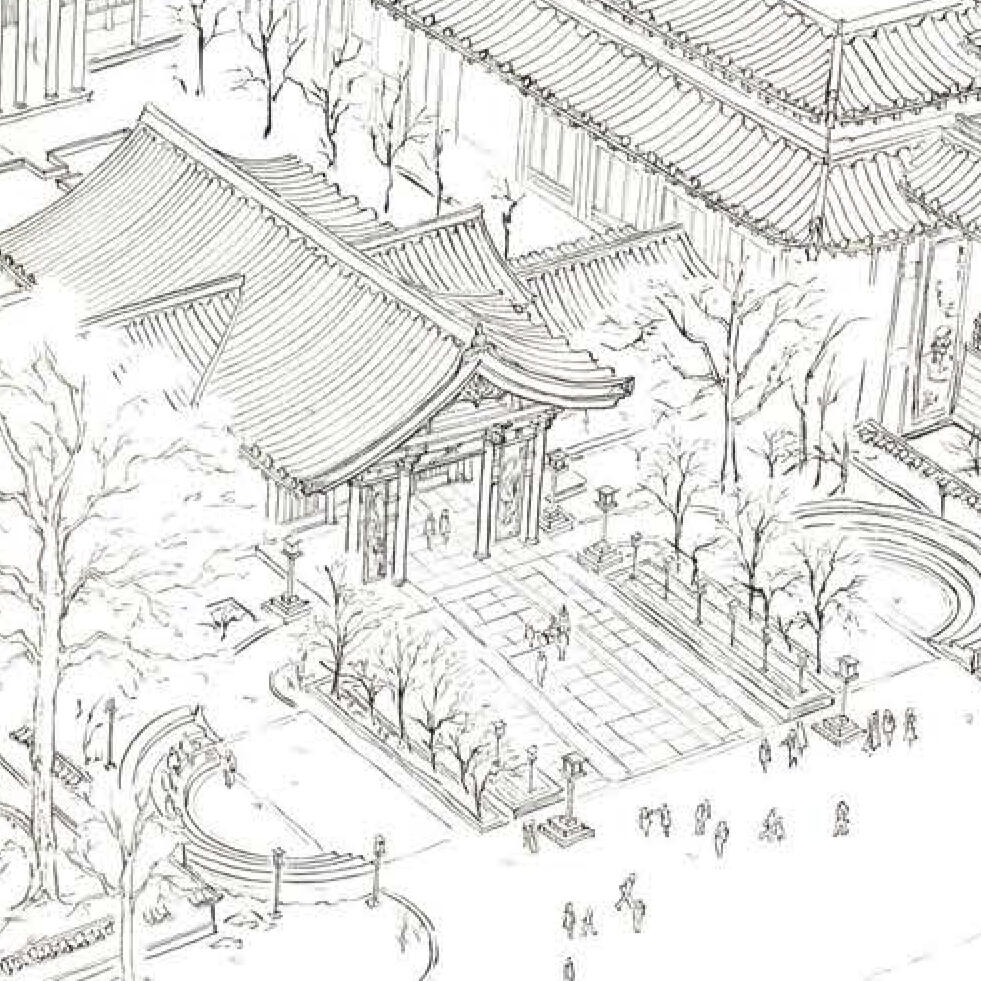
Modeling Visual Creativity: Teach machines to see like an architect
Vitruvius argued in his “De Architectura” that education of a good architect must include a
variety of scientific and social studies that range from geography to astronomy. Contemporary
architecture applications benefit from tools developed for simulation, rendering a previous
understanding of the other disciplines into an architect-friendly interface that cohere to major
design pipelines such as programming, modeling, rendering, and post-occupancy analysis.
Design of buildings often associates with a real-world embodiment that expresses ideology and
expectations. On the other hand, architectural design is also a way of interpreting human thinking
as they project their relationship with civil and natural realms into the future, which is both our
second nature and one essential part of type-III reasoning that makes us “human”. Especially
when a new digital revolution is rising from the horizon, architects shall contribute their
understanding of the entire human creative endeavor as it is constantly reasoned using models
and equipment digital and analogical.
Current Focuses:
To explore what visual behavior means at this starting point of visual creativity as an "invaluable
design tool", our study explores a possibility of integrating measurable visual
behavior into “intentions”. Intentions such as shape, composition, circulation, depth, positive and
negative, and hierarchy are abstract concepts that architecture students learn and apply when
studying and practicing designs. To understand how these “intentions” are
obtained by observing sketches, one opens up a portal into understanding establishing links
between what is seen and what is thought. What’s more, in the current time where Artificial
Intelligence has been integrated into many human creative endeavors, it is crucial to examine this
visual reasoning processes’ relationship with neural networks which assist creative thinking.
© Xiaoyun Zhang @ MIT. All right reserved.
Publications and Exhibitions

Publications:
• Zhang, X., Nagakura, T. (2025). Observe Like an Architect: A neural network model that recognizes embedded design intentions in plan sketches through eye-tracking. 43rd Education and research in Computer Aided Architectural Design in Europe Conference Proceedings.
• Zhang, X., Nagakura, T. (2024). Eye-tracking Architects: Investigating design intentions in plan drawings. XXVIII International Conference of the Ibero-American Society of Digital Graphics Proceedings.
• Brown, C.J., Yao, S., Zhang, X., Brown, C.J. et al. (2023). Visualizing digital architectural data for heritage education. IS&T Conference on Visualization and Data Analysis.
• Dressen, A., Camerlenghi, N., Krusche, K.U., Zhang, X. (2022). Digital Humanities Workshop I: Learning about 3D models and virtual realities through two projects. The Renaissance Society of America Virtual.
• Zhang, X. (2021). Envisage: Investigating design intentions and visual perception through eye-tracking of architectural sketches. Massachusetts Institute of Technology. SMArchS Thesis.
Exhibitions:
• Nagakura, T., Tu, H., Peng, W., Cheng, C., Zhang, J., Zhang, X., Sung, W., Ishikawa, K. et al (2024). Singapore GeAR. SIGGRAPH 2024.
• Zhang, X. Nagakura, T. (2021). Metropolitan Museum of Art, Art of Japan. Medieval Japanese Buddhist Statues of the Temple Room. Interactive digital exhibition of 4k statues.
• Nagakura, T., Zhang, X., Sung, W. (2020). Full-scale AR Reconstruction of Alvar Aalto’s Resident, Aino and Alvar Aalto Shared Visions: Small is beautiful – ideal homes for everyone. Gallery A-Quad. Tokyo, Japan.
© Xiaoyun Zhang @ MIT. All right reserved.
Gallery of Creative Works
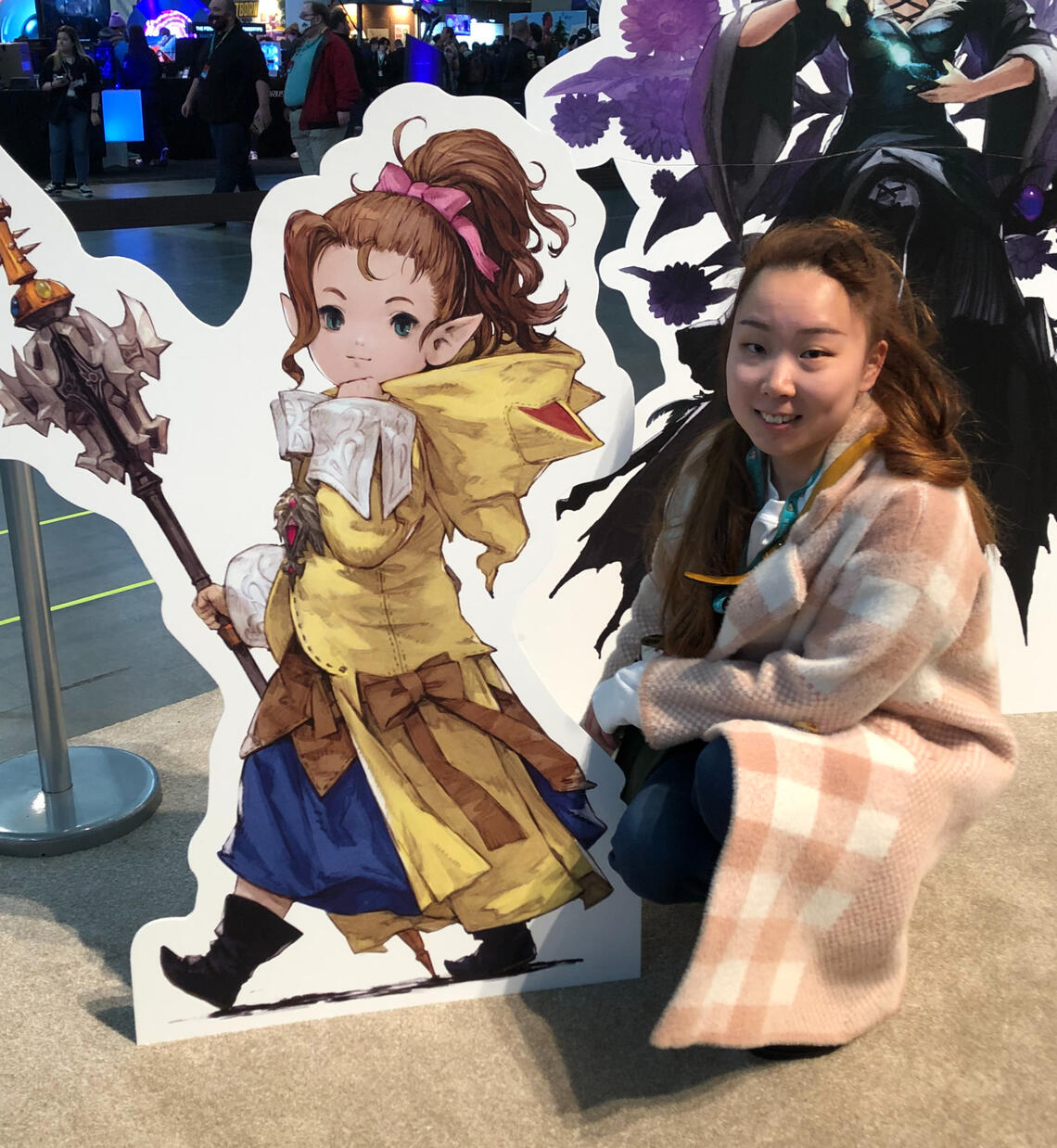
You have arrived at the fun section! Here I included more than academic showcases...such as...?
© Xiaoyun Zhang @ MIT. All right reserved.
Events: what's going on?
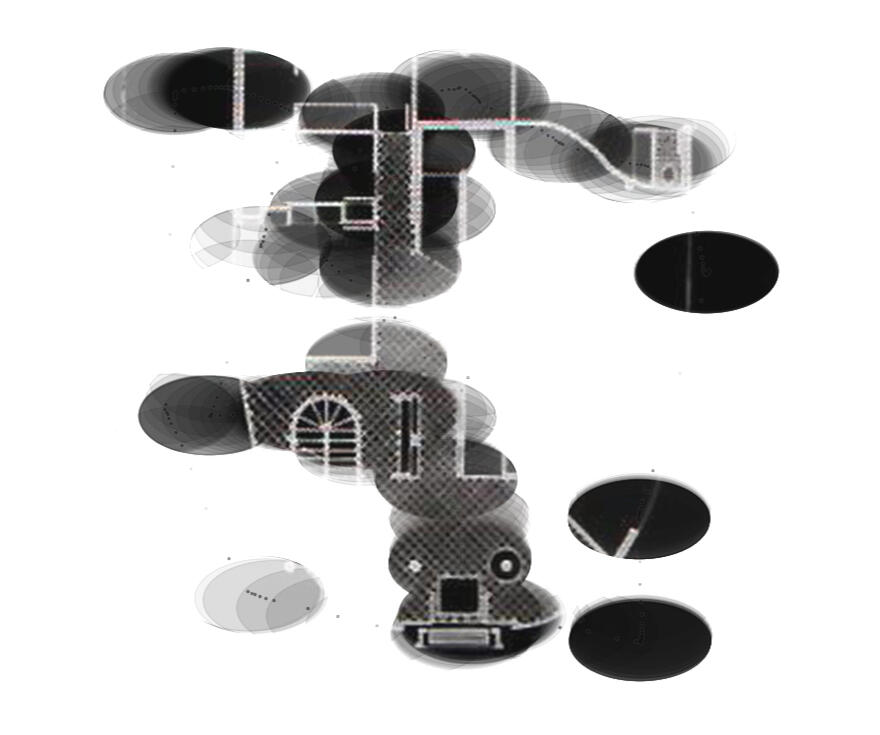
Academic:Fall 2025:
Smoothing Eye-tracking data streaming in Unity using custom real-time filters.
Revising eye-tracking experiment pipelines to embed streaming data into Dynamic Scene Graph representation.Upcoming in 2026:
Exploration and documentation of LangZhong, the home of Spring Festival.
Activities:We like ShinyStuff:
Animating costume weapon props using Arduino, robotic components, and programmable LED strips.CosWear!:
Making of FFXIV Online Edenmorn Coat of Maiming using traditional tailoring material and 3D-printed fashion accessories.
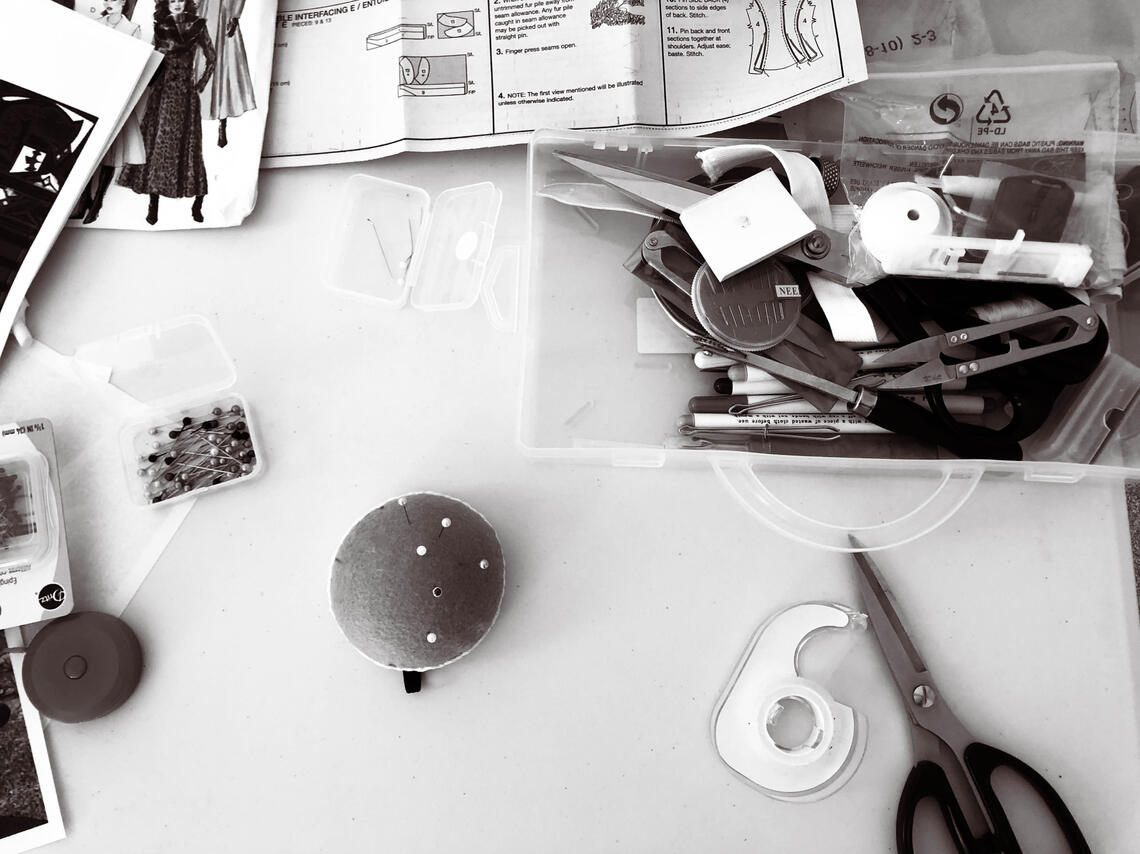
© Xiaoyun Zhang @ MIT. All right reserved.

